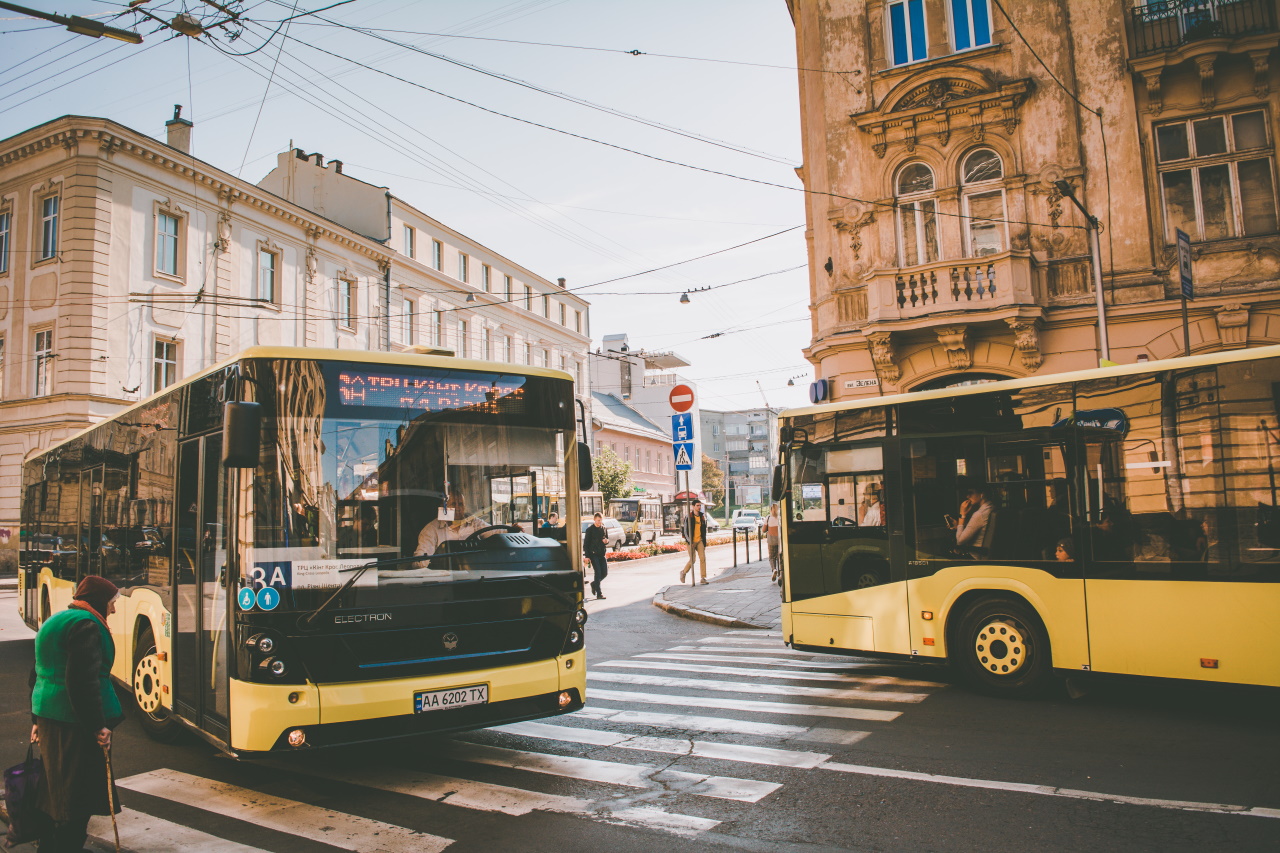
Lviv Now found out, which part of this plan has already been implemented, what changed after the reconstruction of streets, who has priority in the city – pedestrians, cyclists or motorists, and how the citizens are to share space now. We spoke to Marta Pastukh, coordinator of the project «Integrated Urban Development in Ukraine II», performed by the German government company «Deutsche Gesellschaft für Internationale Zusammenarbeit» (GIZ), which was also involved in the process of creating a mobility plan for Lviv.
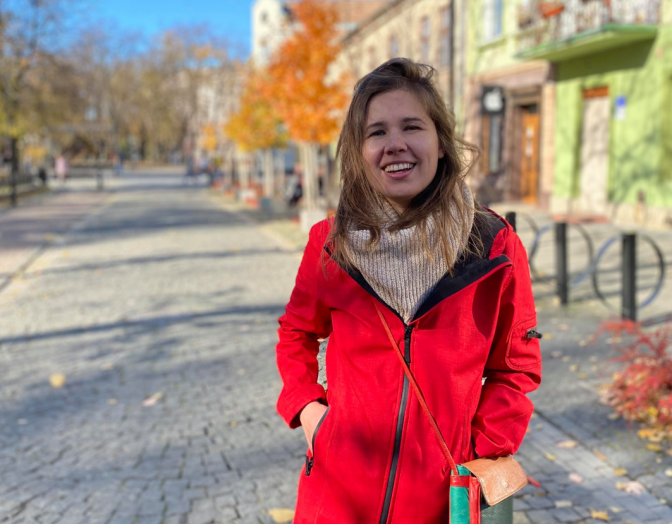
Read more: It Seems We Lived in a Ruined Village: Untended Icy Streets Lead to Record Winter Injuries
Tell us about the Plan for Sustainable Urban Mobility in Lviv? How long it was developed, which are its key elements and what will be implemented next year?
«The development of the plan for sustainable urban mobility began in 2018 and was approved at the parliamentary session 13 February 2020. That is, almost two years passed since it was approved. This document presents the city’s policy on how the city should develop in the field of mobility by 2030. Local experts worked on it, in particular involving municipal companies, holding meetings with activists and residents. We did workshops, on which we, together with the Lviv residents, worked out goals and discussed what vision of Lviv should have in terms of mobility, and then we worked on it with experts.
Among the international experts were representatives from Germany and Switzerland, who additionally involved other people. One of the key experts on this topic was Burkhard Horn, who was once the head of Berlin’s transport department, but now works independently as a consultant.
However, we did not completely copy the experience of other countries, as everything had to be customised to Lviv.
Read also: No place for drivers here? Examining 7 points from Lviv’s new mobility plan
I want to show you the pyramid of mobility: on top of it is a pedestrian, the way it is in all cities. In most cities, bicycle is in second place, but in our case it’s public transport. We determined that it is extremely important for Lviv as the electric transport system is well preserved here because there are both trams and trolleybuses. At the very end are car drivers. Parked cars have the lowest priority because they are the least efficient use of space in the city.
In general, the whole system should work so that each of us can enjoy what is convenient.
How to make the city more accessible, safer for pedestrians?
It seems to me that the situation has changed a bit. People from Lviv often go somewhere abroad, see different experiences there and compare them with Lviv. But our city is changing, just not as fast as people’s expectations are growing. If we take Lviv, starting from the central part and even other districts, we have both lowered crossings and tactile tiles. When repairing streets, they are covered not only where cars drive, but from facade to facade. A few months ago, I visited Kharkiv, and I saw that there was pretty good asphalt pavement, wide roads, but the sidewalks are in poor condition.
Do you think that Lviv has become more convenient for pedestrians?
I can use the experience of other people here, because, for example, I have colleagues from Germany who return to Lviv in a few years, they feel very comfortable. In particular, due to lowered transitions, it’s more convenient to go walking with trolleys.
What should be done to make the pedestrian feel comfortable? Also, tell us what tools are available for this?
In fact, there should be a smooth surface, lighting, street landscaping, drainage and a well-laid sidewalk. As for the sidewalk, it should be at least 2 meters, but these are all approximate figures. If a person has the opportunity to walk through the park, he would rather use it than walk on a street gassed with fossil fuels, so more such green pedestrian and bicycle connections should be developed.
In general, the Sustainable Urban Mobility Plan aims to respond to seven challenges and each of them has a solution and relevant goals:
- Traffic safety
- Comfortable environment for walking
- Quality public transport
- The growth of motorization
- Bicycle as public transport
- Territorial development and transport infrastructure
-
Weak institutional capacity of the city council
For example, the challenge is security. This is about achieving a zero death rate from road accidents. It does not mean that there will be no accidents, but it must be done so that there are no fatal consequences. This is influenced by traffic calming devices, safety islands, etc.
When a person collides with a car travelling at 70 km / h, a pedestrian dies in 90% of cases, and if the driver travels at a speed of 30 km / h, the mortality of such accidents is reduced to 10%. Research shows that when two people in the city go to one point, one goes at 30 km / h and the other 70 km / h, they arrive at about the same time.
Many traffic calming devices have now been installed on the streets: chicanes [a sequence of tight winding turns on city streets to slow cars], Safety islands, and traffic canals. We also have raised crossings, especially on quieter streets. That is, the car must slow down to climb the transition.
Read also: 40 dangerous areas in Lviv where road accidents most often occur. Map
The second challenge immediately after safety is about pedestrians, about a comfortable environment for walking. We are talking about sidewalk areas and places near trees, public transport stops.
Sykhiv district and the city centre should be connected by the first pedestrian route – it is almost seven kilometres for pedestrians and cyclists, are there other developments of this type?
The Green Line, a concept we have proposed, is quite long, but it is only now being implemented. It is not a question of making one piece this year and another the next, but that when reconstruction is carried out somewhere, this concept must be taken into account.
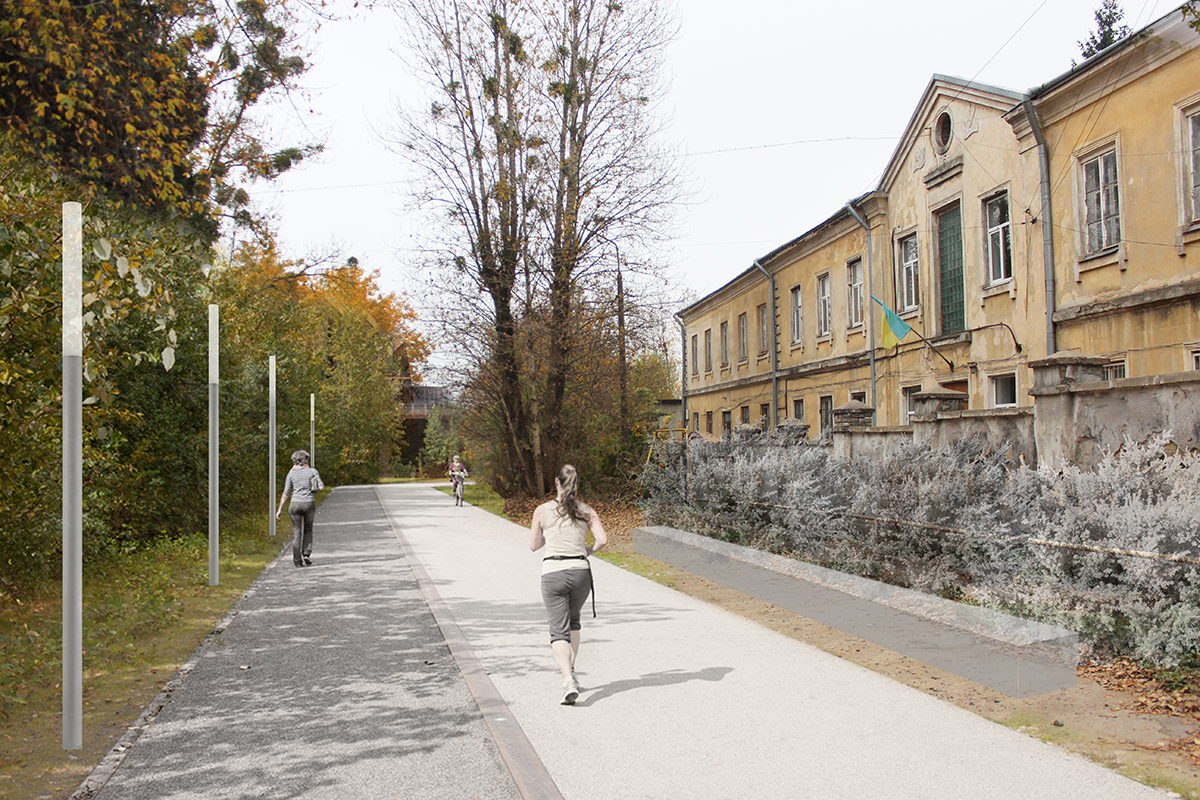
The concept of the Green Line was initiated by the GIZ project «Integrated Urban Development in Ukraine» and the Department of Architecture and Urban Planning of the Lviv City Council. It’s main purpose was to connect the two buildings of the Ukrainian Catholic University in Khutorivka and Kozelnytska
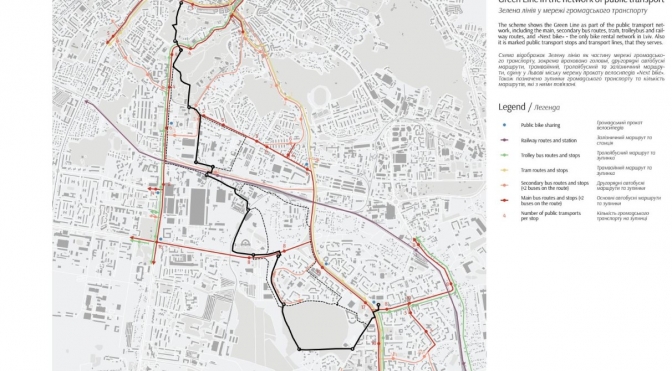
Many people are thinking about some individual elements of the streets, but we need to take things more globally. We put these ties together, worked it out with the chief architect of Lviv and the head of the ecology department, the head of the transport department. In particular, we identified 9 different connections, one is planned to be developed – the connection of the railway station through the technopark near Skrynia, through Smal-Stotskoho Street, Pishchani Ozera (Sand Lakes) and Horikhovyi Hai (Nut Grove) with the end point – Sheptytsky Center of the Ukrainian Catholic University.
Now, the city architects are working on the concept of how everything could be changed there. The biggest problem of passability is in the Horikhovyi Hai, where it looks like pedestrians can be offered only a natural trail. Therefore, this route should be as convenient as possible for pedestrians and cyclists, district administrations can be engaged in it and create extended parts of the sidewalk. It would make it impossible for the drivers to park their cars in the area of the intersection, and at the crossing and reduce the time spent by pedestrians on a pedestrian crossing.
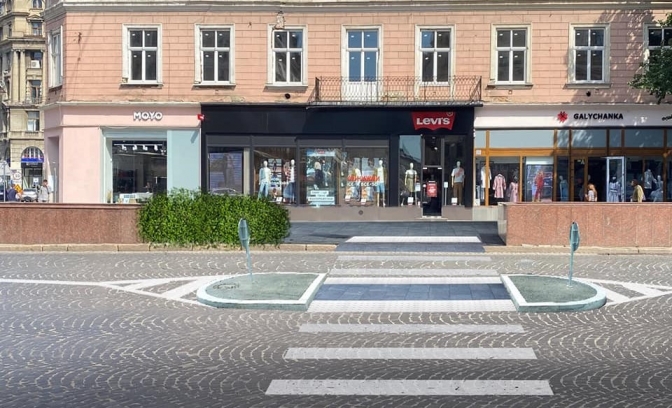
The Sustainable Mobility Plan also proposes to duplicate all underground crossings in the city. The Department of Transport of the Lviv City Council proposed to arrange such a transition on Halytska Square near the building №14
When you put pedestrians a priority, what were you guided by and did you know what criticism you would face?
It is normal practice for a pedestrian to be in the first place. A strategy for the development of pedestrian traffic was developed in Berlin 10-15 years ago. After the elections at the national level, they set a goal to make a national strategy for the development of pedestrian traffic. We, for instance, are currently developing a national strategy for cycling. As for car drivers, many of them have children and they would like their children to be able to go to school safely. And I think if you look at our strategy from a different perspective, everything becomes clear.
With regard to the reconstruction of most streets, it is necessary to involve people, but this should be discussed from the perspective of what people would like to do there. That is, not to talk about any technical solutions, but about what functions should appear in space after the reconstruction. Then we need to involve experts who must find solutions for our needs. There are no compromises.
In the Sustainable Mobility Plan, we just proposed to create a department for sustainable mobility and street infrastructure, because there was only management, but transport is only part of mobility. There must be some people who understand what to do with congestion. In general, such a structure should work for all types of mobility.
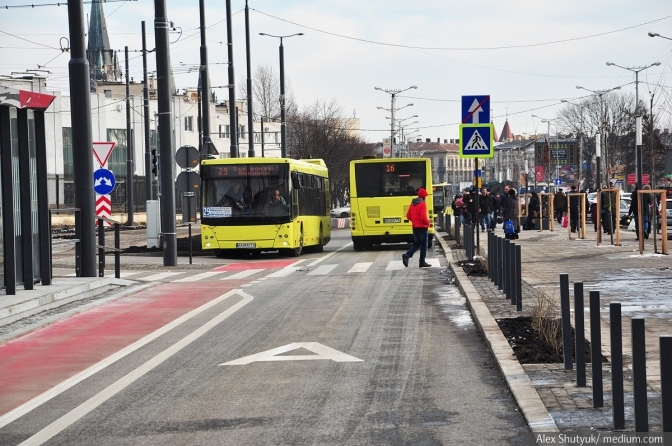
Do you think there should be any priority in decision-making, the introduction of any new ideas? What does Lviv need to develop first of all?
In any case, everything must be approached comprehensively. We can’t tell people to walk from tomorrow, because everyone has different opportunities. And here, the approach is not that «the bike is good and the car is bad», but everyone must consciously make the decision to move. I understand that a person who used to drive a car may not want to take a bus now. But there will only be more cars and then, people will ask to widen the streets, but this will not lead to anything. First, you need funds for construction, and then for maintenance. All the same, we have examples when there are 6 lanes, and in the evening, everyone still stands on them.
Nevertheless, the Sustainable Mobility Plan cannot be implemented without making every step in its turn. Construction of new streets will allow unloading the existing ones, optimization of public transport will encourage not to take cars to the centre or for short distances. Do you see threats to the implementation of the Sustainable Mobility Plan now?
I would say I see the potential. We are not focused on threats, but on the potential for most people to understand why we need this strategy.
What will the city look like in 2030 if this strategy is implemented?
Our vision is that safe, environmentally friendly, comfortable and fast movement through the city should be for everyone. For us, public spaces are the priority, so that there are connections between them to make people move comfortably, relatively speaking, from Mickiewicz Square to Mytna Square.
There are things that can be done with small interventions but have great results, such as improving sidewalks or crossings. For example, if you make a smoother surface at the crossing near the King Danylo monument instead of rough cobblestones, it will be more convenient for everyone. A few years ago, when they started covering the transitions, they realized that it takes a lot of money, but it has a great effect.
Are there any spaces in Lviv that you would rethink to see them in 2030 in a new way?
I believe that the markets «Dobrobut« and «Galician« are not organised conveniently enough for people, namely the area around them. For instance, if I want to go through the Opera House to «Malevych« night club, it is not clear where to go.
With regard to Mickiewicz Square, there were also considerations to rethink this area, it is completely detached, not used. There are ideas, but no specific project yet. I would like to note that there are spaces in the city that are changing very well and are becoming very comfortable for people, such as Koliivshchyny Square.
What can be offered to a driver who is a little lower in that pyramid so that he does not feel deprived?
Do not think that he is a 100% driver. The car is only one of the options for movement, and if we explain this, then everyone’s understanding of our strategy will be completely different. As the number of cars is constantly increasing, we do not have the opportunity to constantly increase parking spaces, near the Powder Tower for example. Parking should be paid, so people will think about whether to go here, or get somewhere further, or not take the car to the center at all.
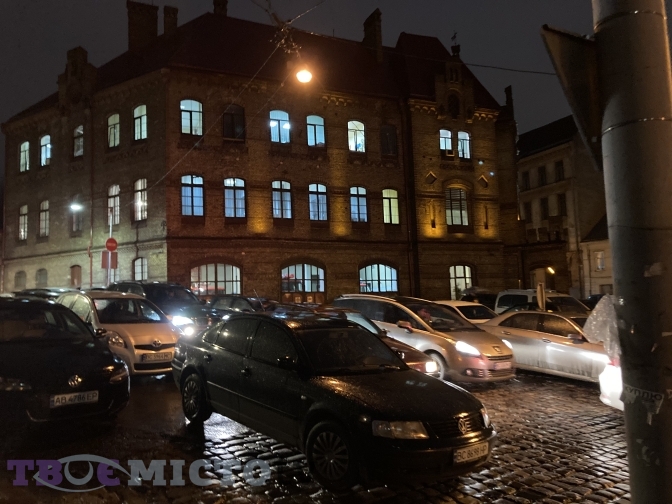
What are the solutions for drivers in the Sustainable Mobility Plan?
There are intercepting parking lots, in particular on Stryiska Street near the racetrack, and works are currently continuing there. Here is a situation that for intercepting parking lots, the city needs to allocate land. At one time, during the development of the Sustainable Mobility Plan, we discussed such models that this can be done with Epicenter or Metro. Ideally, this should be an intercepting parking lot associated with an electronic ticket: if you conditionally came from a neighbouring village of Solonka, left the car and boarded public transport to get to the centre.
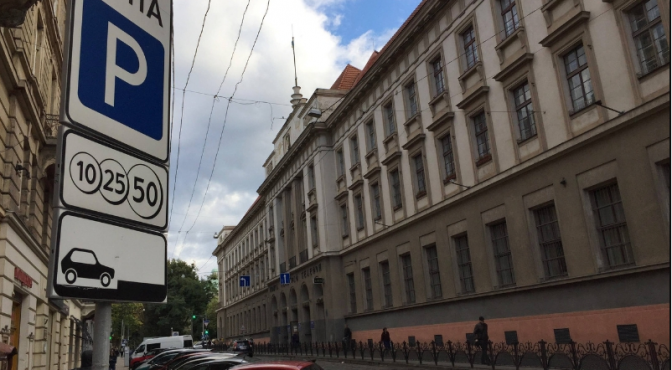
I do not have such a decision on where to arrange parking, but I know that if you make an offer, there will be even greater demand. Here it is necessary to look at each case. It is also important that mobility will be closely intertwined with urban planning. If in one house, for example, there is housing and offices, then parking spaces can be used very efficiently. In particular, people can leave in the morning, and those who came to work can park in their parking places.
Could you tell us, was there exactly the same situation with mobility anywhere else as it was in Lviv? What decisions did other cities make?
Many cities in the Netherlands or Germany were initially car-oriented, they focused on building roads and parking lots. Now, these cities already have sustainable mobility, that is, they take into account the environment, there are electric cars, the emphasis on electric public transport, very well-developed pedestrian and bicycle infrastructure. In addition, the experience of other cities shows that they are becoming «cities of places» so that as many public spaces as possible appear and they become more comfortable for people.
Read also: Innovative mayor: «You are not stuck in a traffic jam. You are a traffic jam»
Such problems were in many cities in the late 90’s – the early 2000s, but they all are developing. For example, Paris is currently working on a «15 minutes» strategy. I think it is important to go in the direction of an ecological and comfortable city, where the areas will be functionally balanced.
Most cities that have managed to achieve a certain level of mobility have metros, city trains, inner and outer rings, but Lviv does not. The metro cannot be arranged in our city, but maybe there are some other solutions?
The mobility plan is designed for 2030, we have also drawn up a clear action plan. There is talk now about the city train, but it seems to me that everything should be done gradually. There are no objections from officials, but there is a lot of work to be done.
Are there any spaces and projects that seemed to be implemented according to all modern requirements, but it did not work? In particular, Dvirtseva (Palace) Square, as people often complain that there is no place to park and that there are traffic jams.
A blogger Andrii Bilyi was filming videos, and I saw with my own eyes that there was a half-empty above-ground parking lot next to the station, and everyone was shouting about the need for an underground one. I do not know if an investor would be interested in this project. As for the square in general and Chernivetska Street, I think that this space works, because many elements are much more convenient than before. As for the spaces that did not work, I can not name them.
How can road safety be achieved in addition to increased and decreased pedestrian crossings and lighting?
It can be implemented with the help of street design that encourages people to follow traffic rules. These are various security islands, such as …
Do you consider Khutorivka a safe street after reconstruction?
Khutorivka now is better than it used to be. There are cameras that monitor the speed of drivers. It may be possible to wait a few more years, but not the fact that it would be possible now, during the coronavirus pandemic. Therefore, what this street looks like now is better than it was before, especially since there are additional lanes for public transport.
Are there any projects you are currently working on and consulting?
There is a mobile hub on Bandery street. I know that the Institute of Spatial Development is making design and estimate documentation, because this triangle was not included in the priority project of Bandery’s reconstruction, it will be corrected.
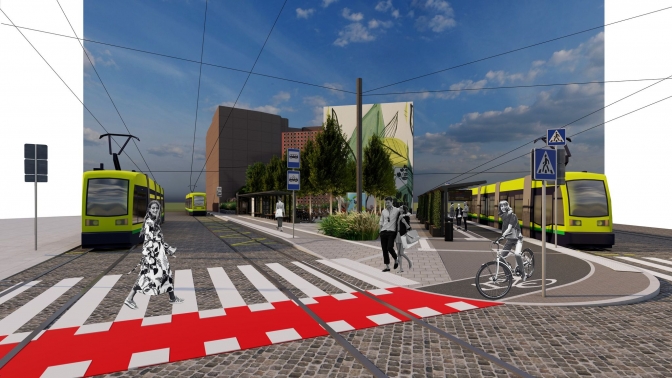
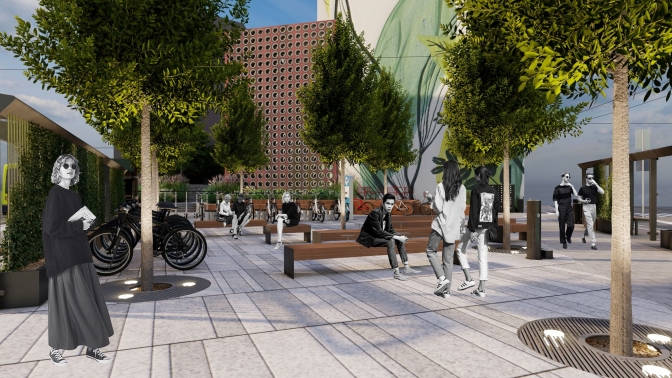
The mobile hub is mostly about conveying information to people. For example, people need to understand either take a tram to the train station, for example, or take a bicycle. It is also about convenient places for a short time, so you can charge your phone and even work a little. But this is only a pilot project.
We want to develop such mobile hubs for transport hubs on the Palace, for example, or near Lem Station.
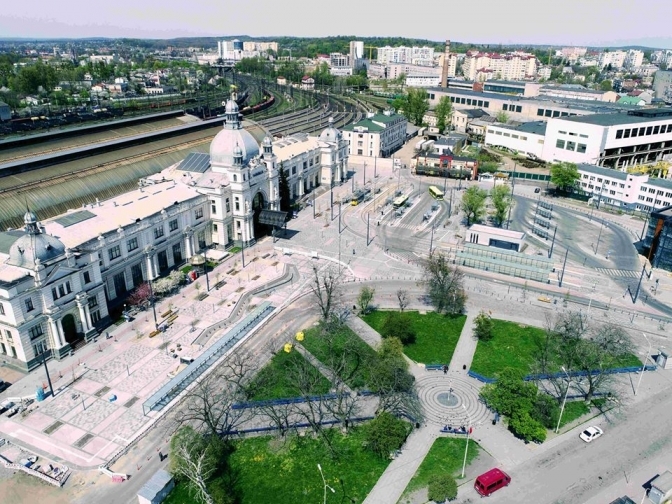
Read also: The author of «Solaris» was a Lviv native. Now, the city regains memory about him
We are also involved in working with the European Investment Bank (EIB). In particular, at several intersections in order to rethink them and make them safer. We will currently work on six. From our side, we will finance sketch projects, the city will order design and estimate documentation, and the EIB will finance the reconstruction itself.
Reference
The project «Integrated Urban Development in Ukraine II» is implemented by the German government company «Deutsche Gesellschaft für Internationale Zusammenarbeit (GIZ) GmbH». Lviv, Chernivtsi, Vinnytsia, Zhytomyr, Podilskyi district of Kyiv, Poltava, Melitopol and Kharkiv take part in it. The project is funded by the Governments of Germany and Switzerland.
Victoria Savitska, Sofia Shavranska
Translated by Vitalii Holich
You can read a Ukrainian language version of this story here.
Follow Lviv Now on Facebook and Instagram. To receive our weekly email digest of stories, please follow us on Substack.
Lviv Now is an English-language website for Lviv, Ukraine’s «tech-friendly cultural hub.» It is produced by Tvoe Misto («Your City») media-hub, which also hosts regular problem-solving public forums to benefit the city and its people.












